Ancient Egyptian Medicine
Illness is in no way a new thing, and if you happened to be alive and sick during the time of the pharaohs, there was most likely a medicine treatment of some sort to help you through. However, in ancient Egypt, medicine the way we think of it now was not always the preferred method of curing diseases.
The ancient Egyptians had a leg up, so to speak, on the rest of the ancient world when it came to medicine. Due largely to their embalming process, the ancient Egyptians gained great knowledge of anatomy because of the practice of removing human organs. They were so advanced in their understanding of the human body, afflictions and ailments, even the Greeks were envious of their expertise.

© David Erroll - Relief of a Doctor
Ancient Egyptian medicine dates back to the days of Imhotep, the Vizier of Djoser during the 27th century B.C. Although they believed that an angry god or evil spirit caused disease, the ancient Egyptians formulated a number of valid treatments and remedies.
Ancient Egypt Medical Papyrus
The Edwin Smith Papyrus
This papyrus carries the name of the man who purchased it from an Egyptian dealer in 1862. It is a medical text on surgical trauma, dating back to 1600 B.C., and it is the only medical papyrus of its time to reflect a scientific approach to medicine. Many Egyptologists credit the text to Imhotep, even though he lived one millennium earlier, as the Papyrus is believed to be based on texts written earlier than 1600 B.C.
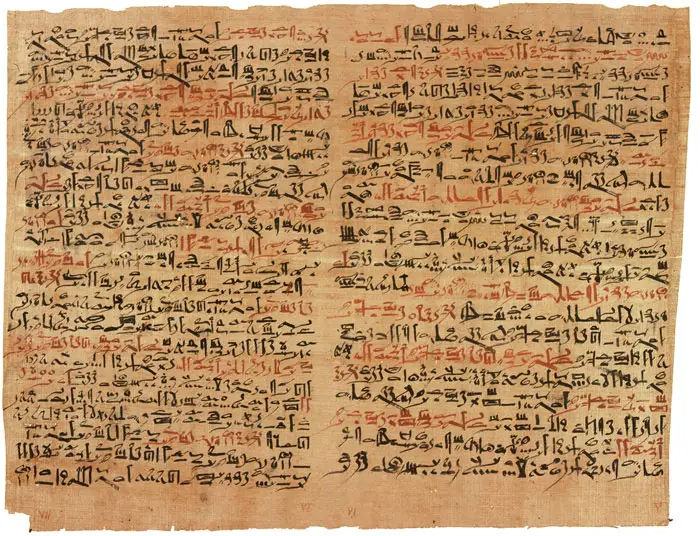
© Jeff Dahl - Fragment from the Edwin Smith Papyrus
The papyrus documents 48 cases including injuries to the head, neck, arms and torso, along with the treatments used. It also details a diagnosis and prognosis, as well as the cause of the trauma.
The treatments included using sutures to close wounds, using honey to prevent and cure infection and using raw meat to stop bleeding. The papyrus details recommendations on immobilizing the head and neck in the case of injuries to these areas and detailed anatomical observations.
The Ebers Papyrus
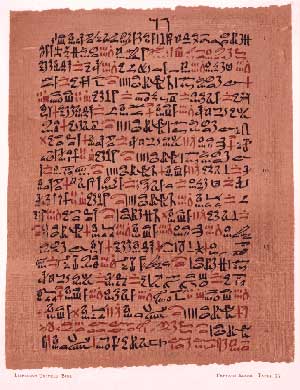
The Ebers Papyrus
Purchased by Georg Ebers in 1873 at Luxor, the Ebers Papyrus dates back to 1500 B.C. It is a papyrus scroll that contains over 700 magical spells and remedies. It also contains incantations intended to ward off demons that caused disease.
The papyrus includes a “treatise on the heart”. This treatise documents the heart as the focal point of blood supply, with vessels attached. The ancient Egyptians did make some mistakes. They believed the heart was the center for every fluid carried within the body including urine and tears.
The ancient Egyptians were advanced in realizing that mental disorders were real, just like the physical disorders. A chapter called the Book of Hearts in the papyrus discussed mental disorders like dementia and depression. Other chapters included diagnosing pregnancy, contraception, and intestinal disease including parasites (which were common near the Nile River), dentistry, skin and eye problems and broken bone treatments.
The remedies listed on the Ebers Papyrus include a mixture of heated herbs for asthma (so that the asthmatic could inhale the fumes), wrapping the exposed end of the Guinea Worm (parasite) on a stick and pulling it out. (Amazingly, this remedy is still used nearly 4,000 years later.) It also offers a cure for death, a froth of beer and half an onion.
Kahun Gynecological Papyrus
The text contains 34 sections that deal with specific gynecological problems, diagnosis and treatment. This text dates back to 1800 B.C. and was found in 1889. This text informs that the ancient Egyptians believed that many of the maladies they suffered from occurred as a result of different conditions of the womb.
All of the treatments talked about in the Kahun Papyrus are non-surgical. Treatments generally include massage, fumigation and the application of various scented oils. Eyes and the womb are, for some reason, closely linked in ancient Egyptian health and medicine.
Ancient Egyptian Doctors
In ancient times, the ancient Egyptian doctors (and other healers) were the best in the world. Priests were the first people to practice medicine. Scribes also practiced medicine, which proved beneficial for documenting procedures and treatments. The first school dedicated to medicine dates all the way back to Egypt’s first dynasty.
Physicians studied at schools that were called The House of Life. Individuals who studied to be physicians were dedicated to one disease or one part of the body, so in ancient Egypt, doctors were everywhere. Within the hierarchy of physicians there were regular doctors, senior doctors, those who inspected and overseers who acted as ministers of health.
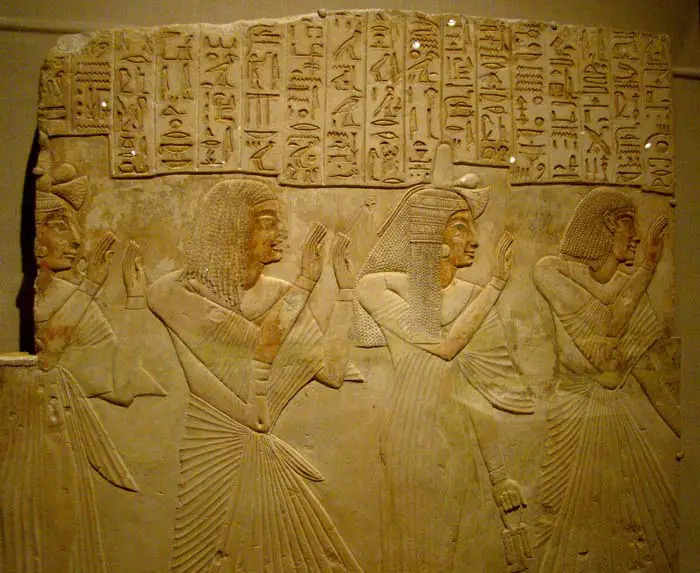
© Glenn Marsch - Relief of a Doctor's Family
The ancient Egyptians were very clean people who loved life and wanted to live their lives free of disease and pain. This idea, coupled with their extensive knowledge of the human anatomy, fueled their continual enlightenment in the field of medicine. The first known physician was the high priest and Vizier, Imhotep, who lived from 2,667 B.C. to 2,648 B.C.
Imhotep is considered by many to be the true father of medicine. He is believed to have diagnosed and treated well over 200 diseases that dealt with the abdomen, eyes, rectum, bladder and more. He is known to have practiced some surgery as well as dentistry. In 525 A.D., he was elevated to full God status, the only regular person ever to reach the position of God in ancient Egypt.
Doctors separated types of injuries into three different categories.
- Treatable injuries were handled immediately.
- Contestable injuries were considered not to be life threatening. The patient was expected to survive without intervention by the doctor, so patients were simply observed.
- Untreatable Ailments. In these cases, doctors would not intervene.
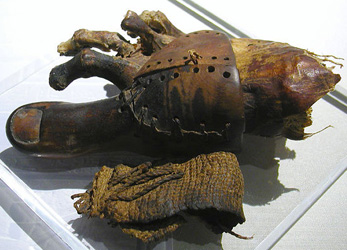
© Jon Bodsworth - Prosthetic Toe
Magic, Priests and Religion
Although the ancient Egyptians were knowledgeable in herbal remedies and non-surgical treatments, remedies were still closely associated with magic and religion. When a doctor or priest carried out the necessary therapy, they would also chant incantations and wave around sticks to drive out the angry god or toxic spirit that caused the disease.
Many of the medical papyri found include spells and magic alongside practical treatment. The ancient Egyptians believed that the spoken word had power over the physical world. Priests and doctors also used amulets with spells written on them and sacred jewelry to help in their quest to drive away disease. They also prayed to Sekhmet, the Goddess of Healing and Medicine.
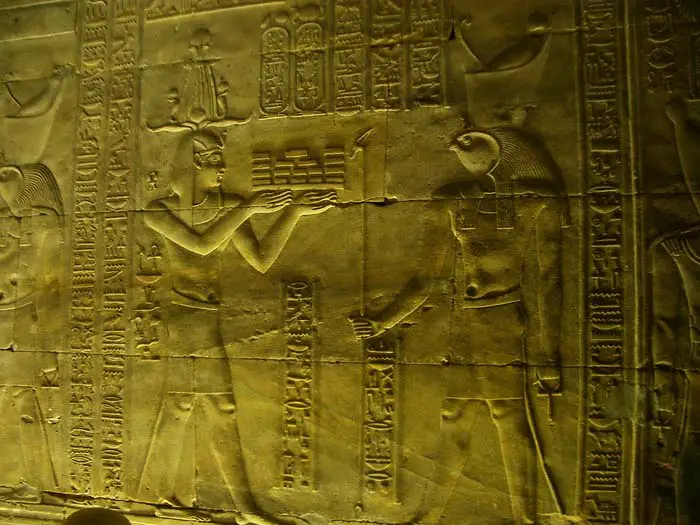
© David Erroll - Doctor holding Medicine before Horus
Ancient Egypt Dentistry Practices
The ancient Egyptian medical timeline includes the earliest known dental procedure. This procedure is documented as taking place between 3,000 B.C. and 2,500 B.C. It likely involved drilling out cavities or pulling out teeth. The ancient Egyptians also, luckily, had treatments for dental injuries and pain.
The Edwin Smith Papyrus offers directions on healing wounds within the mouth. Due to their coarse diet, one of the most common ailments was attrition, the wearing away of tooth tissue. Attrition led to inflammation, tooth loss and abscesses. To fight attrition, the ancient Egyptians developed mouthwashes to provide pain relief as well as to promote gum and tooth health. The ingredients in the mouthwashes included bran, celery and sweet beer.
Dental surgeries were performed as well, including treating a dislocated jaw, cutting away of diseased gums and draining abscesses. Dental bridges have also been identified on mummies, though it remains unclear if the bridge work was done prior to death or for the sake of being thorough in the mummification process.
Ancient Egyptian Medicine Tools and Herbs
Tools
The medicine and surgical tools available to ancient Egyptian doctors might astound people today. Both the Ebers Papyrus and Edwin Smith Papyrus include references to “knife treatments” including several different names “knife” had for different surgical procedures. The ancient Egyptians used many surgical tools including saws, forceps, scales, shears, hooks, spoons, drill, a graduated cubit (measuring rod), shears and of course, knives.
Herbs

© David Erroll - Doctor Offering Medicine
Cancers and other diseases were untreatable and incurable in ancient Egypt, but when they could administer treatment to a person’s condition, they usually used herbs. Some of these natural remedies are even used today.
- Asthma: honey and milk, sesame, frankincense
- Headaches: poppy seeds, aloe
- Burns and skin diseases: aloe
- Pain relief: thyme
- Digestive aids: juniper, mint, garlic, sandalwood
- Breath freshener: caraway, mint
- Chest pains: mustard seeds, aloe, juniper
- Dressing a wound: honey (which is a natural antibiotic)
- Epilepsy: camphor
- Laxatives: onions, parsley, balsam apple, dill
- Vomiting: mint to stop it, mustard seeds to induce it
Facts about Ancient Egyptian Medicine
- To this day, no evidence exists of the existence of artificial teeth, although dental problems were a widely spread issue.
- Only alcohol was used as anesthesia during surgical procedures.
- A parasite that lived in the Nile River was likely the cause of death for many ancient Egyptians. The disease is called Schistosomiasis.
- The Egyptians were very clean people. Afraid of illness and disease they bathed and purified their bodies often, and shaved their body hair.
- Ancient Egyptian doctors were specialized in dentistry, pharmacology, gynecology, autopsy, embalming and general healing.
- The largest contribution the ancient Egyptians made was their documentation and research on how the body works. They realized the pulse related to the heart beat and the bronchial tubes were related to the lungs.
- Malaria was common in Egypt, and doctors could not treat it.
- Ancient Egyptian medicine inventions included ways to assist difficult deliveries, including 11 different methods.
- Ancient Egypt’s 4th Dynasty brought about the world’s first female physician. Her name was Peseshet and her title was, “Lady Overseer of the Lady Physicians”.
- The ancient Egyptians believed the human body consisted of passages that behaved like irrigation canals. When these became blocked, the person became sick.
